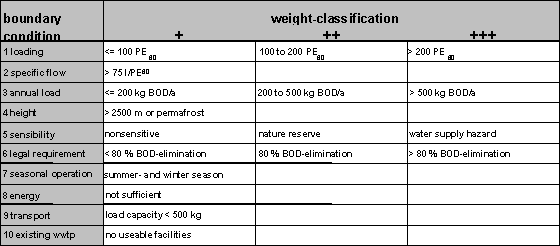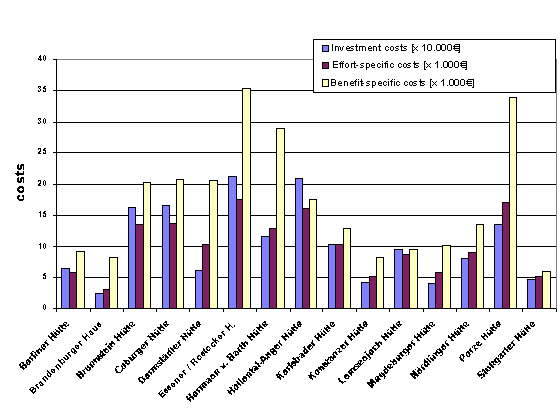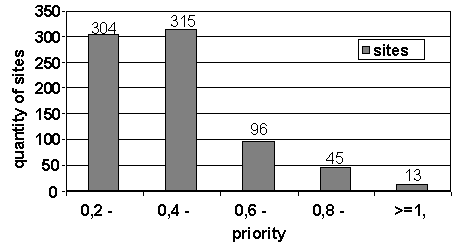environmental benefit of wastewater treatment plants in mountainous areas in the alps

| Comparison of technology, costs and environmental benefit of wastewater treatment plants in mountainous areas in the alps |

|
Ecobalance
B. Wett, W.
Becker, K. Ingerle |
Abstract
Keywords
Cost analysis
Benefit analysis
Priority Ranking
Conclusions
References
On-site treatment, mountains, ecobalance, public funding, ecological benefit, economic effort
For this reason 10 boundary conditions have been considered which are defined in the ÖWAV Guideline 1 “Wastewater treatment in the mountains” (Austrian Water- and Waste-Management Association, 2000) in more details. These boundary conditions are combined as influencing factors of the investment costs using uniform units. This means that each boundary condition is described by a weight classification of expected difficulties a certain project has to deal with. The amount of weights (1, 2 or 3 weights) of a boundary condition is a measure of the required technical or economical effort caused by a local boundary condition. The sum of weights of all boundary conditions of a planned treatment plant represents the expected effort.

Tab. 1: Suggested weight classification to characterise the effort caused by 10 boundary conditions
Effort E = Total of weights (1 - 10)
The advantage of such a simple effort calculation is based on its quick and transparent application. Of course this inquiry is a compromise in accuracy but it enables a comparison of different sites. The effort-specific costs are a clear indicator of the economic efficiency of the analysed treatment plant. The cost analysis of all 15 Life treatment plants (Fig.1) represent a cost-database for an evaluation of future investments. As a further consequence public flat rate funding according to the effort weights might be considered. In comparison to the common cost-proportional funding administration and supervision would be simplified.
Benefit B = Total of weights (1 - 4) x weights (5)
The environmental benefit of the wastewater treatment plant Konstanzer Hütte is calculated by this equation: B = (2+1+2+0) + 1 = 5
Benefit-specific costs are investment costs related to the benefit B (Fig.1). In some cases the effort-specific costs differ significantly from the benefit-specific costs. For instant low effort-specific and high benefit specific costs mean a budget-priced construction of a treatment plant with low environmental relevance. The suggested simple evaluation procedure requires only basic data and no detailed investigations.

Fig.1: Investment costs of all 15 Life treatment plants related to the effort and the environmental benefit of their installation.
The Office of the Government of Tyrol (section Water Management) administrates a database about ca. 1000 touristic sites in the mountains which has been elaborated on-site by a detailed questionnaire. The suggested approach to calculate the priority as a benefit/effort ratio has been installed tentatively. After programming different query routines the weights of all 10 boundary conditions could be determined automatically from the database. Only 20 % of the sites provided not sufficient data in terms of information about the sensibility of the site and they have been neglected. Fig.2 presents the results of the analysis and the graduation of 5 priority classes.

Fig. 2: Priority ranking of treatment plants of 773 analysed touristic sites which are administrated in a database of the Office of the Government of Tyrol.
Wastewater treatment in mountainous areas (in German, English, French and Italian). Guideline 1, Vienna
Wett, B., Becker, W., Ingerle, K. 2000:
Comparison of technology, costs and environmental benefit of wastewater treatment plants in mountainous areas in the Alps.
EU-Life-project homepage: http://www.uibk.ac.at/c/c8/c815/life/intro.html